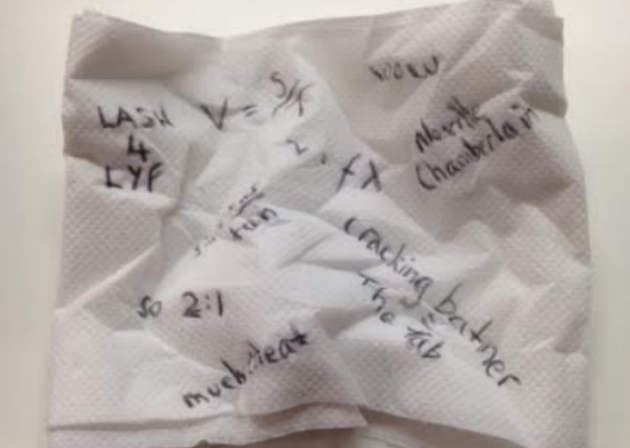Hello, friends!
About four years ago,
the film Race 3 was released with Bollywood actor Salman Khan in it.
This film received terrible reviews from the audicence and critics alike.
It is considered a huge flop.
But do you know, despite this, this film was a financial hit?
This film was made on a budget of ₹1.8 billion,
and it earned more than ₹3 billion.
On the other hand, there's a stark contrast
the Bollywood film Mera Naam Joker, 1970.
The director, producer, and actor of the film was Raj Kapoor,
a huge celebrity of his time.
This film is considered a cult classic nowadays.
One of the best films of its time.
Even so, this film lost so much money,
that it put Raj Kapoor in a financial crisis.
If anyone earned profits from this film
it was a company based in the Soviet Union.
This is the reason why some hit films turn out to flop for some people,
and flops films become a financially hit film.
Come, in this video, let us understand
the Business Model of Bollywood Films.
"How are films distributed?"
"This secret is lost to us, Sir."
"People aren't going to the theatres as much."
"I think nobody on this planet can judge what people like."
"I just spent a lot of money on marketing, and it's a whole business."
"Right now, truly content is skin."
"We'll be swimming in money!"
"When you say a South Indian film is successful,
I think it's an Indian film which is succeeding."
Friends, the Indian film industry is the world's largest film producer.
The number of films made in India,
is unmatched by any other place in the world.
Every year, about 1,500 to 2,000 films are made in India
in 20 different languages.
The Hindi film industry that's known as Bollywood,
had been the most popular film industry in India for a long time.
Even though, only about 16% of the Indian films are made in Bollywood.
Out of the total films being made in India.
But the market share of Bollywood in terms of revenue,
was the highest.
About 45% of the collections from the films,
were by the Bollywood films.
I am using past tense because this was the scenario before the pandemic.
Today, the number 1 film industry in India is the
Telegu film industry.
Their share in the domestic box office this year is at 28%.
And Bollywood's share has fallen to 27%.
Overall, the South Indian language film industries,
have increased their market share from 36% in 2019,
to 59% by 2020-21.
Bollywood is slowly losing its dominance,
but the business model on which all these films work,
is the same for all of them.
To understand how a film earns money,
first, we need to understand
how a film is made.
The process of making a film
can be divided into four stages.
In the stage of Development,
the story of the film is developed.
The script and dialogues of the film are prepared.
Then in the Pre-Production stage,
the main cast and the supporting cast as selected.
The actors who will work in the film.
During this stage, a crew is hired as well.
The shooting equipment is arranged,
whether it'll be rented from somewhere.
The shooting locations are selected.
And the travel and accommodations are arranged.
And if the film needs any permission for filming,
the permits and insurance are secured at this stage.
And then comes the third stage, Production.
The film is actually shot at this stage.
Once the shooting of the film is over,
it goes into editing.
This editing is known as the Post-Production stage,
wherein the film is finally compiled.
In each of the stages of this entire process,
a lot of money has to be spent.
Apart from the salaries of the actors,
the writers need to be paid,
at least in some films,
the crew needs to be paid,
the expenses of renting or buying the filming equipment,
the expense of getting the requisite permits.
Overall, there's a huge expenditure.
It is very rare that a single individual has this kind of money.
The budget of an average mainstream Bollywood film
is around ₹500 million.
The upcoming film Brahmastra,
has an estimated budget of more than ₹3 billion.
Even the most successful Bollywood actors
like Ranbir Kapoor or Akshay Kumar
wouldn't have the money to spend on one film.
That's why the task of managing expenditures is undertaken by huge corporations,
known as Production Companies.
Brahmastra is among the most expensive Bollywood films.
That's why it's not produced by only 1 production house,
multiple production companies are spending money to make this film.
Dharma Productions, Prime Focus, and Star Studios.
The individuals who pay their own money to pay the expenses of the film,
are known as the Producers.
If you remember the brilliant comedy film released in 2007, Bheja Fry,
was actually one of the lowest-budget Bollywood films of all time.
The total cost of making this film is estimated to be around ₹7 million.
₹7 million can easily be paid by a rich person.
That's why there was only one individual producer for this film.
Sunil Doshi.
The only producer of Bheja Fry.
Friends, the film producers are like entrepreneurs,
their task is very risky.
They invest their money to bear the expenses of making a film.
If the film turns out to be a hit,
they will earn a good return on the money they spend.
But if the film turns out to be a flop,
they lose their money.
And as you know,
most of the films are flops.
It is very rare that a film is a hit.
The producers basically invest their money to make a film.
The money they invest in a film,
is known as the budget.
And they hope that the film is a hit so that they can make a profit.
The actual task of making the film is of the Director.
Shooting, editing, post-production,
to maintain an overview of all the various activities and to actually make the film.
In most cases, the directors are like the actors.
They are employed on salary.
They are paid a salary per film.
Especially in films with a small budget.
For the big-shot directors,
such as Steven Spielberg,
they often work on the basis of profit-sharing.
But in our business model, the directors and actors play almost no role.
Once the film is made,
it is loaded onto a small hard disk,
and the producers take this film
to the Distributors.
The distributors has to ensure that the films reach cinema halls,
as well as the OTT platforms.
Often, the distributors are responsible for marketing the films as well.
So they spend their money on the promotion and advertisement of the film.
The distributors make money by selling the satellite rights to the film,
and the digital streaming rights.
The TV channel on which the film is telecasted for the first time,
has to pay the distributor to buy this right.
So that the film is telecast on TV for the first time only on that TV Channel.
When this is done,
it is known as the World Television Premiere.
You might have noticed this.
The distributors sell the film to the OTT platforms as well.
And the OTT platforms pay the distributor for this.
You can take the example of the latest film Bhool Bhulaiya 2.
It was produced by T Series,
and distributed by the company AA Films.
Often, before the film is released,
the distribution companies enter into deals with the OTT platforms.
They sell the film at a mutually determined amount,
and set a date after which they can release the film on their OTT platform.
In the case of this specific film,
this film was a Super Hit.
Even after 2-3 weeks,
this film continued to be in the cinema halls.
But since the deal was already struck between the distributor and Netflix,
and the distributor has sold the film to Netflix for ₹300 million,
and they had agreed on the date after which the film could be released in Netflix,
regardless of the fact that the film was still in theatres,
Netflix released the film on their platform,
because Netflix was protecting its revenue.
They would get the benefits when
they release the films on their platform as soon as possible.
The collections of the film from the cinema halls,
are negatively impacted by this.
But this is a risk borne by the distributor.
The film could have been a flop.
In that circumstance, a quicker release in OTT platforms would have been a wiser decision.
Friends, often for major films,
the production company and the distribution company of the film
are the same.
The large production houses
such as Yash Raj Films, Dharma Film Productions,
UTV Motion Pictures,
Fox Star Studios, Reliance Entertainment,
they are distribution companies as well.
If the producer and distributor of the film are the same,
the production company maintains separate budgets for production
and for marketing and distribution.
Next, when the films are shown in the cinemas,
you need to purchase tickets to watch it.
The ticket counter from where you get the tickets,
is known as the Box Office.
And the revenue of a film by selling the tickets,
is known as its Box Office Collection.
This amount is collected by the theatre owners.
The owners of the cinema halls.
On this revenue, the theatres have to pay GST to the government.
GST at the rate of 18% if the price of the ticket is more than ₹100,
or at 12% if it is less than ₹100.
After paying GST the remaining amount
is known as the Net Collection of the film.
If the Net Collection of a film is more than its Budget,
the film can be considered profitable.
Before GST was introduced, the State Governments charged an Entertainment Tax.
It used to vary from State to State.
When a film was declared Tax Free in a state,
it meant that the Entertainment Tax on that film had been waived off.
It reduced the cost of the tickets.
As I said, now the GST is levied at either 12% or 18%.
The GST is then shared by the Central and State governments.
So now when a state declares a film tax free,
only the SGST component of GST is waived off.
You still need to pay the CGST.
So now the exemption can either be 6% or 9%.
Depending on the price of the ticket.
Basically, this is the involvement of the government
in the business model of films.
You can say that it is the government's way of regulating the film industry.
But since the introduction of OTT platforms such as Netflix,
they are providing free entertainment online.
So the government is unable to charge tax on it.
This aspect is quite similar to crypto.
when crypto was newly introduced
it was outside the purview of the government's regulation.
Although now the government has introduced Crypto Tax as well.
To ensure that there are no avenues on which they aren't levying taxes.
Friends, this reminds me,
did you know that the PNP coin claims to be the world's first regulated cryptocurrency?
A cryptocurrency which follows all government regulations.
It was launched in May 2021,
by the Helios Wealth Management.
A Hong Kong-based company.
To purchase this, you would need to submit your KYC first.
Only after that, a wallet address is issued to you.
This makes illegal transactions quite difficult.
They claim to be the first cryptocurrency
to offer a physical card and physical coins to its users.
Within 2 months of becoming eligible.
They are for those customers who purchase at least 1,000 tokens.
Today, the cost of 1 PNP is at
7 Hong Kong Dollars.
Around ₹70.
They have grown exponentially.
At the time of the launch, 1 PNP coin was valued at 1 HKD.
Another interesting fact about this crypto is that
there is a maximum limit to the investment made by an individual.
No one can invest more than ₹300,000.
Their target for the next year is to,
reach 1% of the growth of Bitcoin,
and to focus on community growth.
They have launched their regulated exchange as well.
Helios DAX.
If you're interested, you can go check them out.
The link is in the description below.
Here, I'd like to thank them for sponsoring this video.
Now let's get back to the topic.
Friends, it is interesting to see
the deal between the producer and distributor
when they aren't the same entity.
There can be 3 basic ways of profit-sharing between them.
First: Minimum Guarantee Royalty.
The distributor pays a minimum guaranteed amount to the producer,
it is a fixed amount to be paid
irrespective of whether the film is a hit or a flop.
If the film is a hit,
a certain percentage of the profits is to be paid to the producer as well.
As Royalty payments.
In this case, the risk is shared between the producer and the distributor.
The second way is when the producer completely sells off the film to the distributor.
And then it is up to the distributor to decide what they want to do with the film.
If the film rakes in a profit, the distributor will earn more,
and if the film turns out to be a loss, it will be borne by the distributor.
In this case, the producer is safe.
There is no risk taken by the producer.
The producer walks away with their fixed amount of profit,
by selling the film to the distributor.
The rest is up to the distributor.
This is what happened in the case of the film Mera Naam Joker.
Raj Kapoor's one of the best films,
In India, this film was produced and distributed by RK Films.
Raj Kapoor's production house.
Raj Kapoor invested all his money in making this film.
He mortgaged his house as well.
But despite working so hard on it,
this film turned out to be a big flop.
The budget for this film was ₹10 million at the time.
But its Net Collections was only ₹8 million.
What can be done to cover the losses?
Raj Kapoor decided that the distribution rights of the film outside India,
in Russia, which was then the Soviet Union,
should be sold off completely to a distribution company based there.
No need for complicated deals,
he sold off the rights for ₹1.5 million.
Because from Raj Kapoor's perspective, he had already taken a huge risk,
and now he wanted a sure-shot amount.
When the film was released in the Soviet Union in 1972,
it became a Blockbuster there.
In 1972, the total collections of this film in the Soviet Union alone,
was ₹168.1 million.
If you adjust this amount for inflation,
this amount would stand at ₹1.007 billion now.
The distributor in the Soviet Union raked in a lot of profit.
But because of the way the deal was structured,
by shifting the risk to the distributor,
Raj Kapoor did not get any part of the profit.
He had to incur losses because of this film.
Isn't this business model surprising?
The third way is the most common.
the producers give the films to the distributors
and then work on commission.
Such that the distributors would be given a commission from the overall profits.
Here, the risk is borne by the producer alone.
And the distributor doesn't have to bear much risk.
It means that in this case, the money spent on marketing and distribution
is spent by the producer.
Once you've understood this, we can move on to the next step of the process.
The distributors approach the sub-distributors in the various regions of the country.
The country has been divided into multiple areas,
known as the Distribution Circuits.
For Hindi films, there are 11 such Circuits.
The sub-distributors then enter into arrangements,
to show the films in cinema halls,
and for screening.
It is the sub-distributors who actually deal with the Exhibitors.
Who are the Exhibitors?
They are the cinema halls or the companies that own the cinema halls.
The sub-distributor and the cinema halls strike a deal
on the revenue sharing.
The deal basically depends on the number of screens given to the film.
There are mainly 2 types of cinema halls in the country,
Single Screen Theatre,
here the deal between the two is usually in the ratio of 25% to 75%.
Of the profits from the sale of the tickets,
25% of it would be given to the exhibitors,
and 75% to the sub-distributors.
And a significant portion of the sub-distributor's revenue
is then paid to the distributors and the producers.
In some cases, this ratio can be 30:70 or 20:80 as well.
The second type of cinema hall in the country is the one found in malls.
known as the Multiplexes.
For these, the ratio of profit sharing between the exhibitors and sub-distributor is different.
It keeps on changing each week.
In the first week, it is usually in the ratio of 50:50.
And with the passing of each week,
the share of the distributor keeps decreasing.
60:40 in the second week,
70:30 in the third.
But this isn't worrisome for the producers and distributors,
because most of the films
earn the majority of its profits in the first week.
Especially the flop films.
To cite an example,
Akshay Kumar's recent release Samarat Prithviraj.
It was a high-budget film.
Its estimated budget was around ₹3 billion.
The producer and distributor of the film was YRF.
In the first week, this film earned ₹550 million.
But the total collection of this film is around ₹860 million.
Most of the earning potential of the film
was reached in the first week.
From the second week onwards, the earnings keep decreasing.
It is the same for most films.
A majorly flop film with the loss of more than ₹2 billion.
And as you know,
this loss will have to be borne by Yash Raj Films.
In big films with top-level actors,
whether the film would be a hit or a flop,
often depends on the image of the actor.
So there are times were the actors
enter into profit-sharing deals with the producers and the distributors.
A way in which the actors become one of the producers as well.
So that the risk of investing in the film
doesn't have to be borne by the producers alone,
the actor shares the risk too.
It's said that Aamir Khan, works on a zero salary.
He doesn't charge a salary,
He enters into a profit-sharing agreement,
where if the film is a hit,
he gets 50% to 80% of the profit.
But if the film is a flop,
he wouldn't get any money
and will have to incur losses.
Many actors work on the model on part salary and part profits.
Such as Salman Khan, one of the highest-paid actors.
It's said that he charges ₹700 million per movie as a salary.
But for his film Sultan,
he had entered a profit-sharing deal for that film.
The gross collection of the film Sultan was ₹5 billion.
Of which ₹1.06 billion was the Entertainment Tax.
The Net Collection was ₹3.94 billion.
This film was produced and distributed by YRF.
10%-20% of the Net Collection went to YRF,
if we assume 20%,
20% of ₹3.94 billion = ₹790 million.
Of this, YRF had spent approximately ₹200 million on marketing the film.
Deducting that, we're left with ₹590 million.
This ₹590 million was earned as profit by YRF,
as the distributor of the film.
The profit they earned as the producer of the film is separately calculated.
₹3.94 billion less ₹790 million
= ₹3.15 billion.
Of which, it is estimated that ₹1.57 billion was the exhibitors' share.
₹3.15 billion less ₹1.57 billion,
= ₹1.58 billion.
The production cost of YRF was ₹700 million.
So the net profit remaining with them was ₹880 million.
Form the deals of selling other rights to the film,
they had earned an additional ₹200 million,
so their total earnings stood at ₹1.08 billion.
They had earned ₹590 million from distribution as well.
So the total earnings of YRF from this film was
₹1.67 billion.
As suggested by reports,
the profit-sharing deal struck between Salman Khan and YRF,
was of 50% profit sharing.
So 50% of the profits earned by YRF would go to Salman Khan.
In this case, ₹835 million.
It can be estimated that Salman Khan
earned this amount from this specific film.
because he had entered into a profit-sharing deal.
It turned out to be more than his normal salary,
because this film was a super hit.
Friends, this is the workings of the Business Model of Films.
I hope you've clearly understood everything.
If you want to understand other Business Models in detail,
such as the IPL or the T20 World Cup,
or of Amazon or Tesla,
I've explained all these Business Models in multiple videos,
You can watch the series of all these videos by clicking on the playlist here.
Let's meet in the next video.
Thank you very much!






